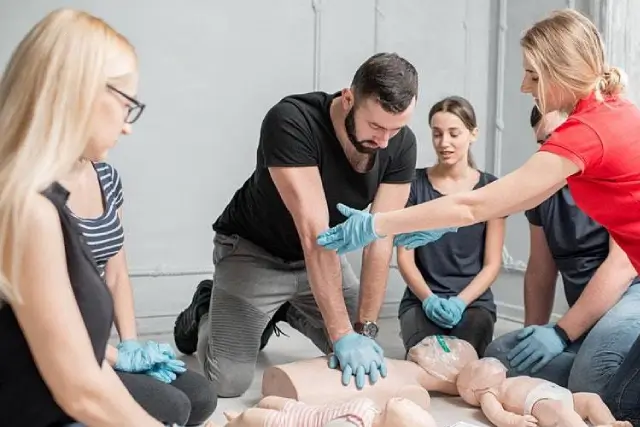
Introduction
Emergencies strike unexpectedly, and being equipped with the knowledge of CPR (Cardiopulmonary Resuscitation) and first aid can be the difference between life and death. This comprehensive guide delves into the essentials of training for CPR and first aid, offering insights, techniques, and FAQs to empower individuals in critical situations.
Why Training for CPR and First Aid Matters
In moments of crisis, the ability to administer CPR or provide initial first aid can significantly enhance the chances of survival for the affected individual. Seconds count, and a well-trained individual can act swiftly and effectively, mitigating risks and ensuring a better outcome.
Understanding CPR
CPR is a crucial life-saving technique that involves chest compressions and rescue breaths to maintain blood circulation and oxygenation to vital organs during cardiac arrest or respiratory failure.
In training for CPR and first aid, understanding the correct technique for CPR is paramount. The process involves assessing the scene for safety, checking the individual’s responsiveness, and initiating CPR with proper hand placement and compression depth.
Importance of First Aid Training
First aid training goes beyond CPR and encompasses a range of skills aimed at stabilizing an individual until professional medical help arrives. From controlling bleeding and managing fractures to addressing burns and administering medications, first aid training equips individuals to respond effectively to various emergencies.
Key Elements of CPR and First Aid Training
Successful CPR and first aid training programs encompass several key elements to ensure comprehensive preparedness:
Hands-On Practice Sessions
Hands-on practice sessions allow participants to familiarize themselves with CPR techniques, first aid maneuvers, and the operation of automated external defibrillators (AEDs). These practical sessions reinforce theoretical knowledge and build confidence in performing life-saving interventions.
Simulation Exercises
Simulation exercises simulate real-life scenarios, providing participants with the opportunity to apply their skills in a controlled environment. By engaging in simulated emergencies, individuals can hone their decision-making abilities and enhance their capacity to respond effectively under pressure.
FAQs (Frequently Asked Questions)
How often should CPR and first aid training be renewed?
CPR and first aid training certifications typically require renewal every two years to ensure that individuals remain updated on the latest techniques and protocols.
Can CPR be performed on infants and children?
Yes, CPR techniques vary slightly for infants and children, emphasizing the use of gentle compressions and modified breaths to suit their smaller anatomy.
What should I do if someone is choking?
If someone is choking, perform the Heimlich maneuver by delivering abdominal thrusts to dislodge the obstruction. If the individual becomes unresponsive, initiate CPR immediately.
Is it necessary to perform mouth-to-mouth resuscitation during CPR?
No, hands-only CPR is recommended for untrained individuals or in situations where mouth-to-mouth resuscitation is not feasible or preferred.
Can I be held liable for providing CPR or first aid assistance?
Good Samaritan laws protect individuals who provide reasonable assistance in an emergency situation, shielding them from liability as long as they act in good faith and within their scope of training.
Where can I enroll in CPR and first aid training courses?
CPR and first aid training courses are offered by various organizations, including the American Red Cross, the American Heart Association, and local healthcare providers.
Conclusion
Training for CPR and first aid is a fundamental aspect of emergency preparedness, empowering individuals to respond confidently and effectively in critical situations. By acquiring essential skills and knowledge, anyone can become a valuable asset in safeguarding the well-being of others.
